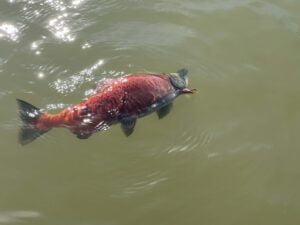 We all need a break from time to time, especially after the pandemic outbreak. We need time to relax, unwind, and lose all of our troubles – even if it’s just for a weekend getaway. Being outdoors is one of the healthiest ways to take a break. With the fresh air and sunshine in abundance, there is no better way to get back to your roots.
We all need a break from time to time, especially after the pandemic outbreak. We need time to relax, unwind, and lose all of our troubles – even if it’s just for a weekend getaway. Being outdoors is one of the healthiest ways to take a break. With the fresh air and sunshine in abundance, there is no better way to get back to your roots.
The best way to enjoy the great outdoors all year round is by going on a camping trip. Camping in winter comes with its own set of challenges, but it will also give you an entirely new and wonderful experience to take back with you. There are so many exciting outdoor activities for you to enjoy, but this article is all about the magic of salmon fishing.
Salmon fishing is fun at any age and for any gender; here are the top five techniques that even beginners can try:
Live Bait
Salmon are attracted to live bait because the bait moves in the water on its own. Live bait also gives off a natural smell that salmon love! Oddly enough, the best live bait to use is salmon eggs – otherwise known as roe. This bait is cheap, easy to find, and colorful enough to attract plenty of salmon.
If you don’t want to use the roe, the next best bait option would be herring. It doesn’t matter much if you use whole or cut herring – if your bait is moving and spinning, then you’ll catch plenty of fish.
Sharp Hooks
If you’ve ever seen salmon before you will know that they have massively thick jaws. These sizeable suckers make setting a hook just that much more difficult for fishermen. You need to ensure that your hooks are razor-sharp – it’s the only way you will have any success on the water.
The best type of hook to use when fishing for salmon is a steelhead hook. This type of hook is a strong, short-shank, sharp eye-up hook.
Flashers
If the water you are fishing for salmon in is deep or dark and discolored, the only hope for you will be to get yourself the right salmon flasher setup. Flashers catch way more fish each year than any other device ever invented.
You must make sure that you rig it right – if you don’t then you probably won’t catch much fish. Flashers only work if you troll them through water properly, they have to look alive.
Downriggers
Trolling to the bottom parts of water is almost impossible to do effectively without a downrigger. The main purpose of a downrigger is to sink your rig and lure it down to a specified depth to trigger a bite from a salmon that happens to be passing by.
As you change the speed at which you are trolling, the depth of your lure and your bait will need to change as well. A trolling speed of two miles per hour is great for catching Coho salmon but if you’re after Chinook salmon you will need to slow that down a bit.
Float Fishing
Float fishing is great. The float keeps your lure traveling at the same depth, more or less, throughout the drift. As your bait drifts by a salmon, it will swim up to grab it. Salmon tend to lie on river beds when they are resting and short floating means that your bait will be suspended just above the river bed.
If you’re going to short float, you will need a drift rod. Drift rods range from around nine to ten feet in length; this is to make sure that it provides enough control as you are drifting your float. When shopping for a rod, don’t just buy the most expensive brand – do some research first.
Important aspects of the rod to take note of include what line it can handle, and what weight class it fits into. Fishing rods are a personal purchase; a perfect rod for some won’t necessarily be a perfect rod for others. Take your time when shopping for one, do comparisons and see how comfortable they are to use.
To End
Salmon fishing can be an absolute ton of fun but, as with all hobbies, you will need to get the right gear to make sure that you make the most of your fishing trip. If you have friends who already fish for salmon, ask them for their opinions but be sure to make up your mind when the time comes.

